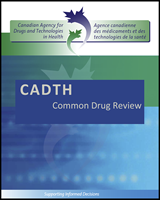Except where otherwise noted, this work is distributed under the terms of a Creative Commons Attribution-NonCommercial-NoDerivatives 4.0 International licence (CC BY-NC-ND), a copy of which is available at http://creativecommons.org/licenses/by-nc-nd/4.0/
NCBI Bookshelf. A service of the National Library of Medicine, National Institutes of Health.
Glycerol Phenylbutyrate (Ravicti) [Internet]. Ottawa (ON): Canadian Agency for Drugs and Technologies in Health; 2017 Apr.
The manufacturer has presented a relatively simple economic model to accompany its submission. In part, this reflects the relatively rare nature of the disease. Within the disease, however, there are a large number of different subtypes, and these have not been modelled separately within the model provided. It is likely that the mix of these subtypes will differ across the four subgroups, and each subgroup presented will contain a number of different subtypes. It is unclear how the cost-effectiveness of dietary control, NaPBA, and GPB will differ within each subgroup, and, in the absence of information, no conclusions can be made.
It is clear, however, that the clinical evidence upon which efficacy assumptions are made did include a variety of different subtypes but possibly a different mix than that expected in clinical practice. To whatever degree this is the case, it seems unlikely to change the overall results as to the cost-effectiveness of GPB. The cost driver of the analysis is the drug acquisition costs.
When the alternative to GPB is Pheburane (per the manufacturer’s submission), the incremental drug cost of GPB ranges from around $25,000 (for those aged under two) to nearly $100,000 per patient annually. As the quality of life (QoL) for patients with UCDs is estimated to be 0.55, there is no way that more than 0.55 QALYs could be produced per year, even when GPB guaranteed survival with no HACs and the alternative treatment resulted in immediate death. Here, the best possible ICURs in a calendar year under such unrealistic conditions would be around $45,500 per QALY in those aged under two years of age, increasing to $181,000 per QALY in those aged 18 and over.
This issue is even more pronounced once dietary control is considered as an alternative, as the extra cost per year of GPB is at least $55,000 in those aged under two years of age, increasing to $236,000 for those aged over 18 years of age. In this circumstance, the best possible ICURs (under the unrealistic conditions previously described) would range from $100,000 per QALY to $430,000 per QALY. As the QoL with a successfully treated UCD cannot be changed, and these broad calculations assume an unrealistically large clinical benefit for GPB, the only way GPB could appear even remotely cost-effective among any subgroup is through significant price reductions.
- ISSUES FOR CONSIDERATION - Glycerol Phenylbutyrate (Ravicti)ISSUES FOR CONSIDERATION - Glycerol Phenylbutyrate (Ravicti)
- Clinical Review Report: Icosapent Ethyl (Vascepa)Clinical Review Report: Icosapent Ethyl (Vascepa)
Your browsing activity is empty.
Activity recording is turned off.
See more...
